
The pebble-bed reactor (PBR) is a design for a graphite-moderated, gas-cooled nuclear reactor. It is a type of very-high-temperature reactor (VHTR), one of the six classes of nuclear reactors in the Generation IV initiative.

Rudolf Schulten —professor at RWTH Aachen University—was the main developer of the pebble bed reactor design, which was originally invented by Farrington Daniels. Schulten's concept compacts silicon carbide-coated uranium granules into hard, billiard-ball-like graphite spheres to be used as fuel for a new high temperature, helium-cooled type of nuclear reactor.
Passive nuclear safety is a design approach for safety features, implemented in a nuclear reactor, that does not require any active intervention on the part of the operator or electrical/electronic feedback in order to bring the reactor to a safe shutdown state, in the event of a particular type of emergency. Such design features tend to rely on the engineering of components such that their predicted behaviour would slow down, rather than accelerate the deterioration of the reactor state; they typically take advantage of natural forces or phenomena such as gravity, buoyancy, pressure differences, conduction or natural heat convection to accomplish safety functions without requiring an active power source. Many older common reactor designs use passive safety systems to a limited extent, rather, relying on active safety systems such as diesel-powered motors. Some newer reactor designs feature more passive systems; the motivation being that they are highly reliable and reduce the cost associated with the installation and maintenance of systems that would otherwise require multiple trains of equipment and redundant safety class power supplies in order to achieve the same level of reliability. However, weak driving forces that power many passive safety features can pose significant challenges to effectiveness of a passive system, particularly in the short term following an accident.

Earthlife Africa is a South African environmental and anti-nuclear organisation founded in August 1988, in Johannesburg. Initially conceived of as a South African version of Greenpeace, the group began by playing a radical, anti-apartheid, activist role. ELA is arguably now more of a reformist lobby or pressure group. Considered by some to be a key voice in the emerging environmental justice movement, Earthlife Africa has been criticised for being too radical, and by others for "working with traditional conservation movements" in furthering the environmental struggle.
Generation IVreactors are nuclear reactor design technologies that are envisioned as successors of generation III reactors. The Generation IV International Forum (GIF) – an international organization that coordinates the development of generation IV reactors – specifically selected six reactor technologies as candidates for generation IV reactors. The designs target improved safety, sustainability, efficiency, and cost. The World Nuclear Association in 2015 suggested that some might enter commercial operation before 2030.
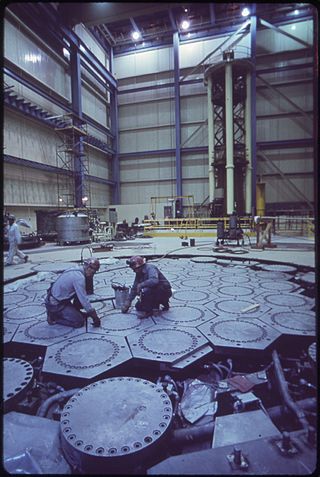
A high-temperature gas-cooled reactor (HTGR) is a type of gas-cooled nuclear reactor which use uranium fuel and graphite moderation to produce very high reactor core output temperatures. All existing HTGR reactors use helium coolant. The reactor core can be either a "prismatic block" or a "pebble-bed" core. China Huaneng Group currently operates HTR-PM, a 250 MW HTGR power plant in Shandong province, China.
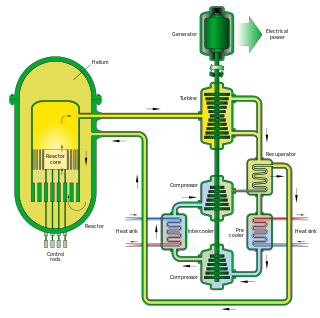
The gas-cooled fast reactor (GFR) system is a nuclear reactor design which is currently in development. Classed as a Generation IV reactor, it features a fast-neutron spectrum and closed fuel cycle for efficient conversion of fertile uranium and management of actinides. The reference reactor design is a helium-cooled system operating with an outlet temperature of 850 °C (1,560 °F) using a direct Brayton closed-cycle gas turbine for high thermal efficiency. Several fuel forms are being considered for their potential to operate at very high temperatures and to ensure an excellent retention of fission products: composite ceramic fuel, advanced fuel particles, or ceramic clad elements of actinide compounds. Core configurations are being considered based on pin- or plate-based fuel assemblies or prismatic blocks, which allows for better coolant circulation than traditional fuel assemblies.
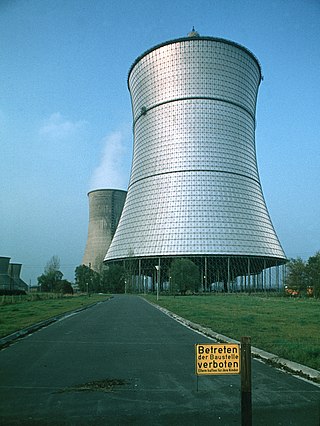
The THTR-300 was a thorium cycle high-temperature nuclear reactor rated at 300 MW electric (THTR-300) in Hamm-Uentrop, Germany. It started operating in 1983, synchronized with the grid in 1985, operated at full power in February 1987 and was shut down September 1, 1989. The THTR-300 served as a prototype high-temperature reactor (HTR) to use the TRISO pebble fuel produced by the AVR, an experimental pebble bed operated by VEW. The THTR-300 cost €2.05 billion and was predicted to cost an additional €425 million through December 2009 in decommissioning and other associated costs. The German state of North Rhine Westphalia, Federal Republic of Germany, and Hochtemperatur-Kernkraftwerk GmbH (HKG) financed the THTR-300’s construction.

HTR-10 is a 10 MWt prototype high-temperature gas-cooled, pebble-bed reactor at Tsinghua University in China. Construction began in 1995, achieving its first criticality in December 2000, and was operated in full power condition in January 2003.

The AVR reactor was a prototype pebble-bed reactor, located immediately adjacent to Jülich Research Centre in West Germany, constructed in 1960, grid connected in 1967 and shut down in 1988. It was a 15 MWe, 46 MWt test reactor used to develop and test a variety of fuels and machinery.
A gas-cooled reactor (GCR) is a nuclear reactor that uses graphite as a neutron moderator and a gas as coolant. Although there are many other types of reactor cooled by gas, the terms GCR and to a lesser extent gas cooled reactor are particularly used to refer to this type of reactor.

A Next Generation Nuclear Plant (NGNP) is a specific proposed generation IV very-high-temperature reactor (VHTR) that could be coupled to a neighboring hydrogen production facility. It could also produce electricity and supply process heat. Up to 30% of this heat could be used to produce hydrogen via high-temperature electrolysis significantly reducing the cost of the process. The envisioned reactor design is helium-cooled, using graphite-moderated thermal neutrons, and TRISO fueled.

As a member of the nuclear non-proliferation treaty, South Africa uses nuclear science for peaceful means. South Africa's nuclear programme includes both nuclear energy and nuclear medicine. In the past there was also a military component, and South Africa previously possessed nuclear weapons, which were subsequently dismantled.
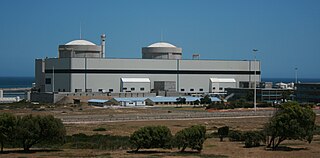
South Africa is the only country in Africa with a commercial nuclear power plant.
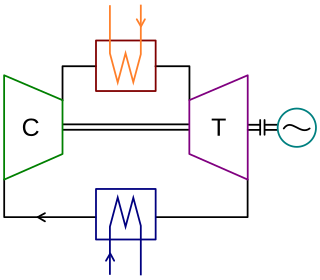
A closed-cycle gas turbine is a turbine that uses a gas for the working fluid as part of a closed thermodynamic system. Heat is supplied from an external source. Such recirculating turbines follow the Brayton cycle.
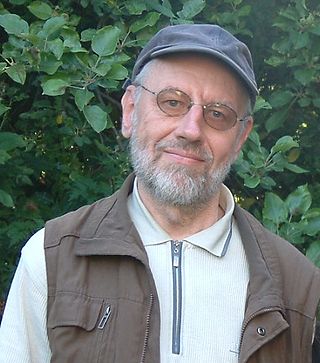
Rainer Moormann is a German chemist and nuclear whistleblower. He grew up in Osnabrück. After finishing highschool he studied physical chemistry in Braunschweig and received a doctor's degree with Raman spectroscopic and theoretical investigations on hydrogen bonds in liquids.
The HTR-PM is a Chinese small modular nuclear reactor. It is a high-temperature gas-cooled (HTGR) pebble-bed generation IV reactor evolved from the HTR-10 prototype. The technology is intended to replace coal-fired power plants in China's interior, in line with the country's plan to reach carbon neutrality by 2060.
Shidao Bay Nuclear Power Plant, commonly known as Shidaowan, is a nuclear power plant in Shandong province, China. The site is located near the Xiqianjia village in Ningjin subdistrict, Rongcheng, Weihai, Shandong. The plant is located about 23 kilometres (14 mi) south of Rongcheng City, 14 kilometres (8.7 mi) northwest of Shidao, and 68 kilometres (42 mi) southeast of Weihai City.
X-energy is a private American nuclear reactor and fuel design engineering company. It is developing a Generation IV high-temperature gas-cooled pebble-bed nuclear reactor design. It has received funding from private sources and various government grants and contracts, notably through the Department of Energy's (DOE) Advanced Reactor Concept Cooperative Agreement in 2016 and its Advanced Reactor Demonstration Program (ARDP) in 2020.













